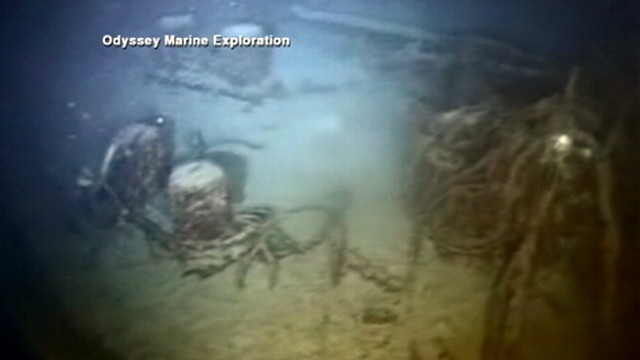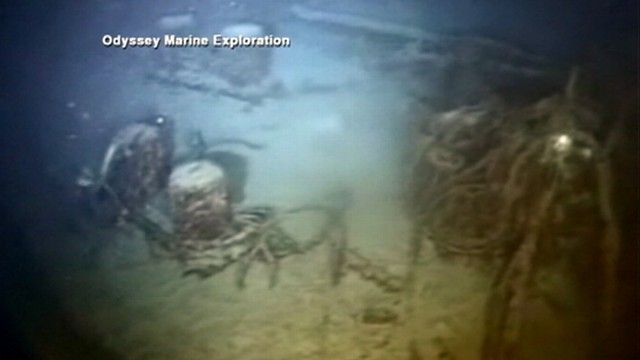World War Two ship wrecks, including hundreds of vessels from battleships to submarines, commercial vessels and sailing boats all sunk during the naval battles of 70 years ago, are being seen as increasingly profitable and worth recovering. The goods aboard some of the ships include gold, silver and coinage, which are retrievable and could fetch hundreds of thousands of dollars when sold.
The SS Gairsoppa is one such ship. She was a British merchant ship sailing from Calcutta, India to Liverpool, UK in 1941 when a heavy storm hit, separating her from her convoy. The captain headed for Galway Harbour, but never made it. A German aircraft was seen spotting the ship on the morning of 16th February, and by 10:30 pm that night a German U-boat submarine had torpedoed her starboard side. As the ship sank, one lifeboat with seven crewmen aboard made it free. Unfortunately, the boat capsized as it neared land and there was only one survivor, a second officer named Ayers.
The wreck sunk within a few hours and still remains around three hundred miles southwest off Galway Bay, Ireland.
Odyssey Marine Exploration is a US company specialising in shipwreck recovery. In 2010 it won a contract with the British government to locate the wreck of the SS Gairsoppa and salvage its cargo of seven million ounces of silver. When the ship sunk the silver was worth just over half a million British Pounds, but in today’s prices it is worth much more, the ABC News reports.
By 2011, Odyssey Marine had located the ship and confirmed it was the SS Gairsoppa. The wreck was on the seabed at a depth of almost 5000 metres. In 2013 the company recovered the ship’s cargo of more than a thousand silver ingots. By July, 61 tonnes of the silver, with a value of just under £140 million, had been lifted from the wreck. In its agreement with the British government, Odyssey Marine retains 80% of the value of the retrieved cargo, while the British government retains 20%. In 2014 the Royal Mint had 20,000 commemorative 50-pence coins made from silver recovered from the wreck of the SS Gairsoppa.
Odyssey Marine says that it is only due to recent advances in deep water technology that recoveries like this are possible. The company’s equipment includes sonar scanners that search and locate wreckage. Since the turn of the century the company been able to search twice as fast and get very high-quality underwater images. Software improvements help Odyssey check the images and estimate the wreck’s size and shape. The company then takes that information and compares it against the ship’s original plans to see if it is the same ship. For cargo recovery, a whole new generation of deep water, robotic vehicles can now do their work as deep as 20,000 feet.

